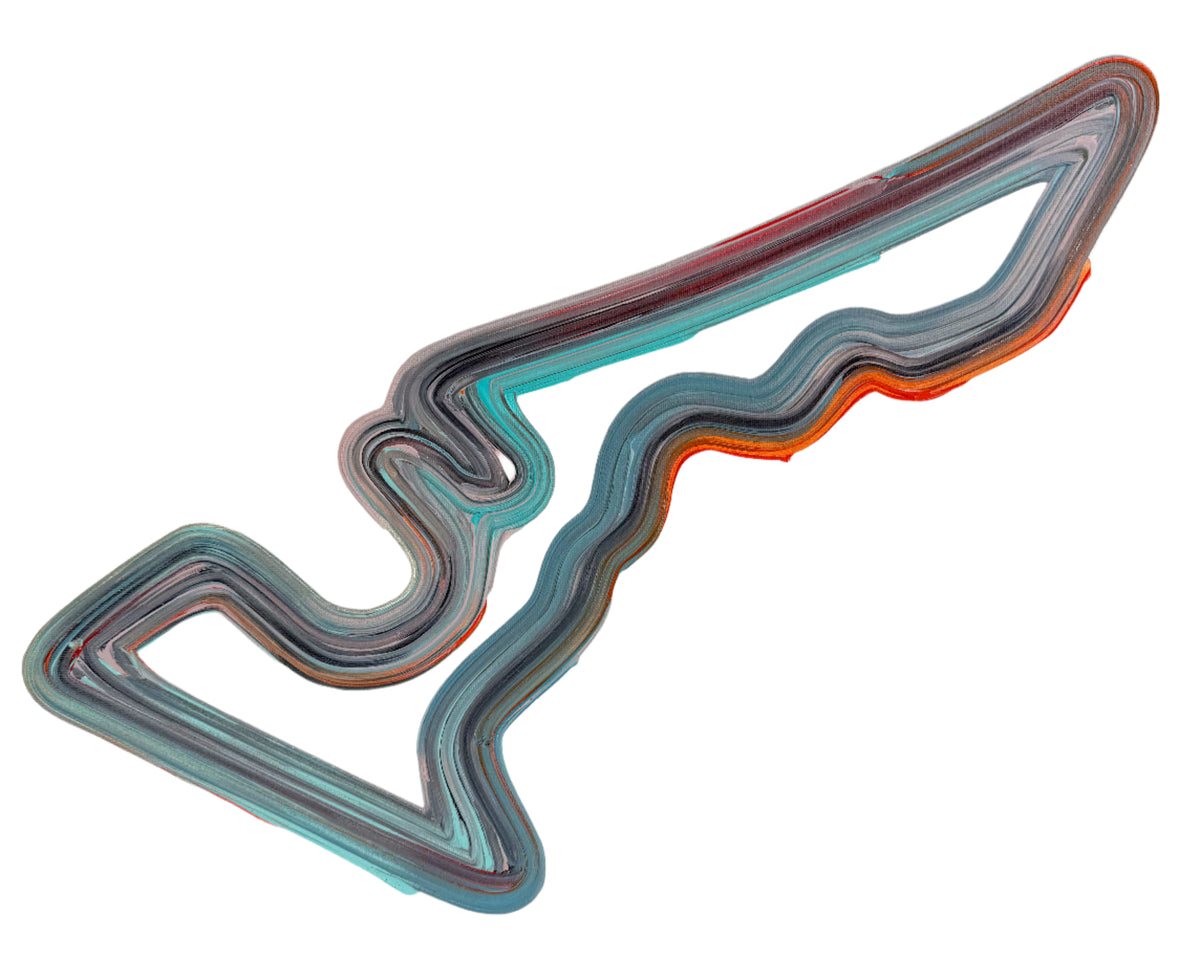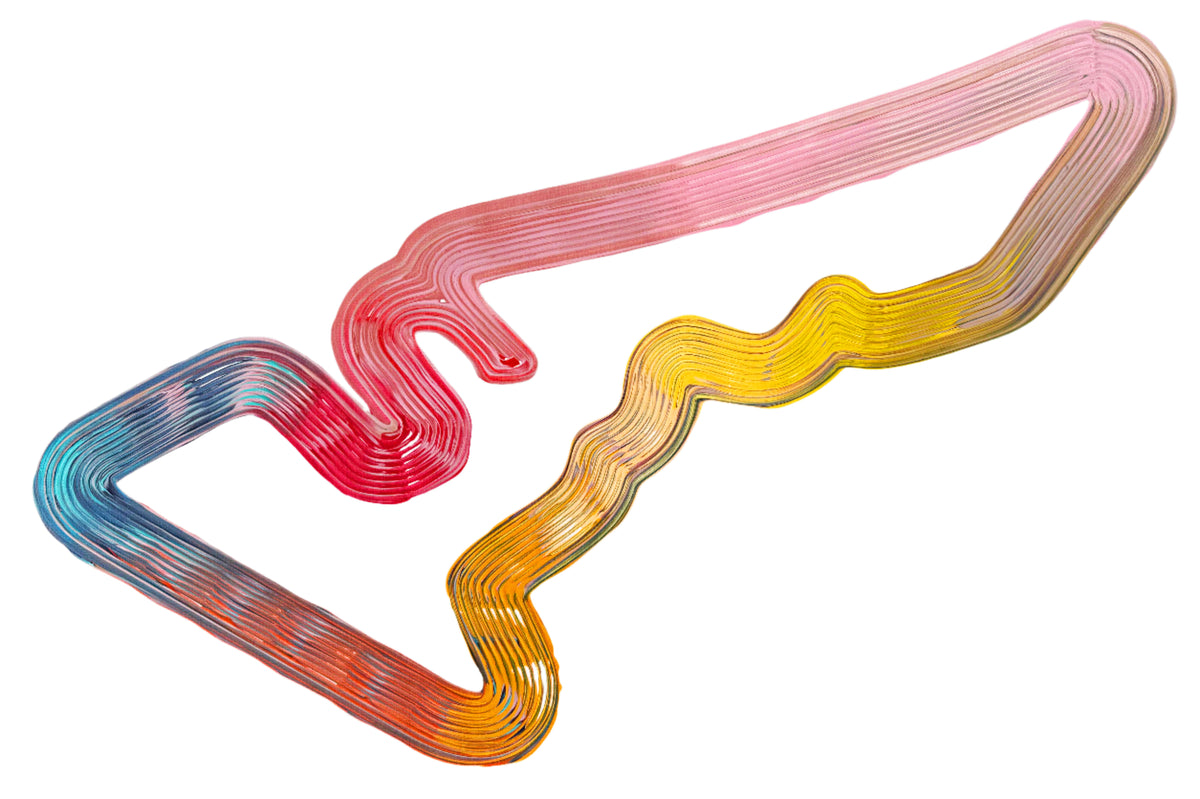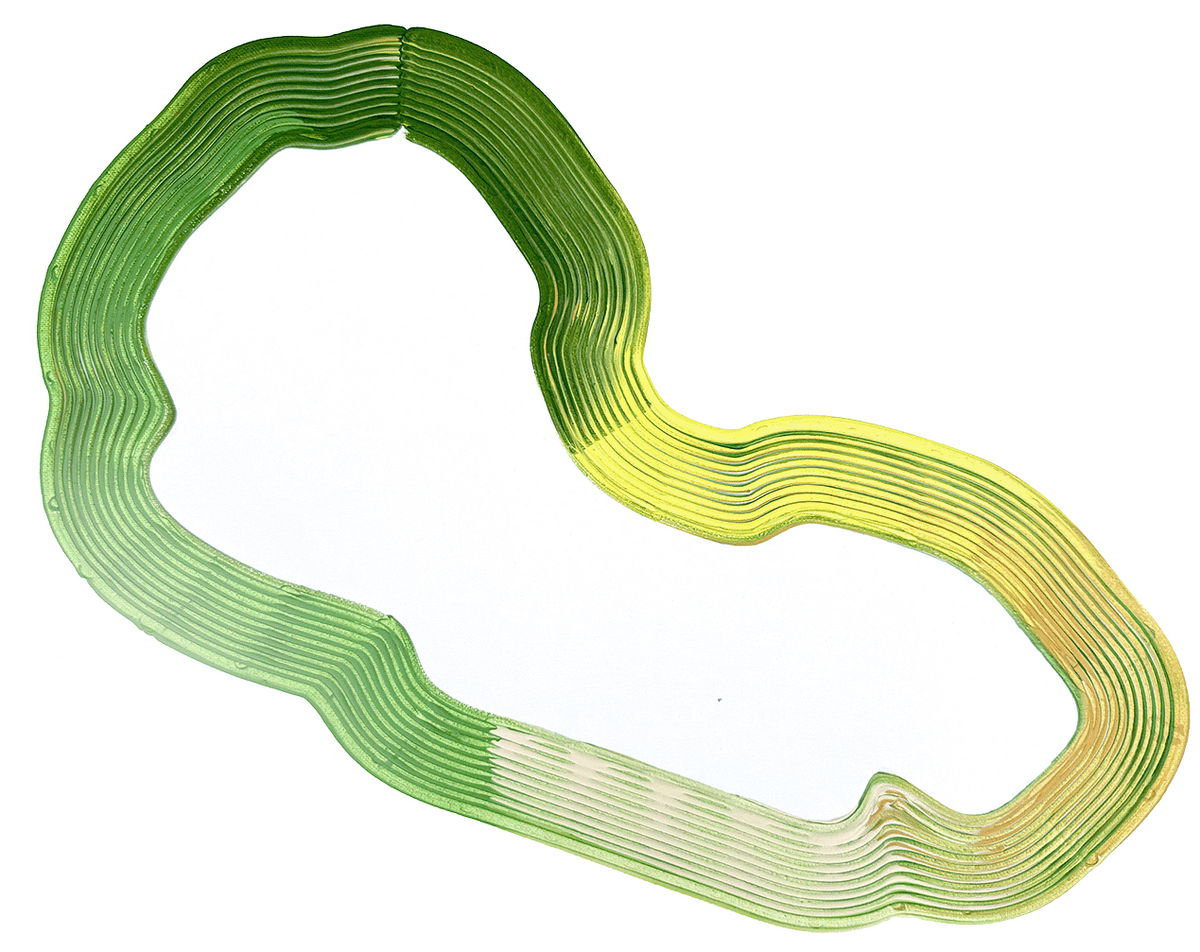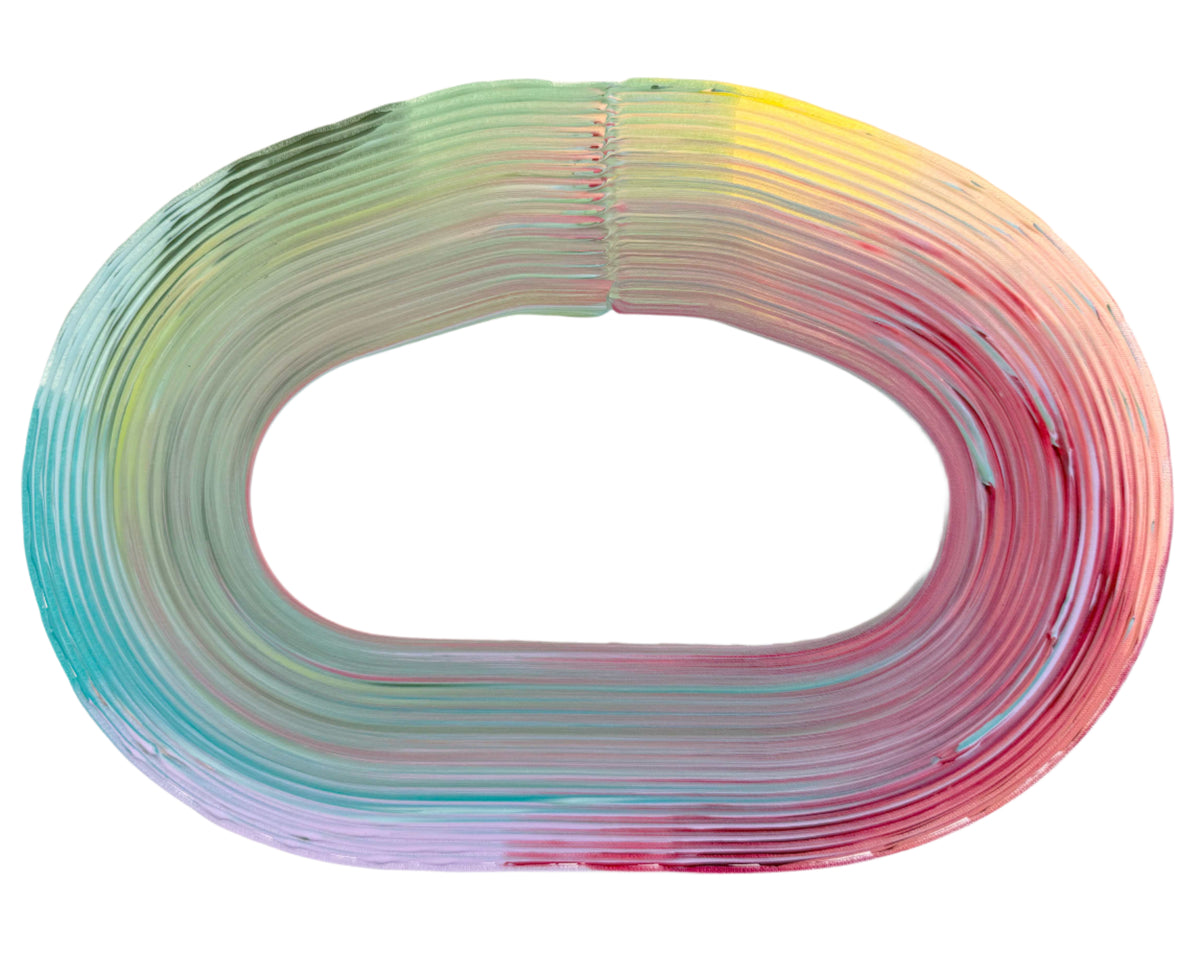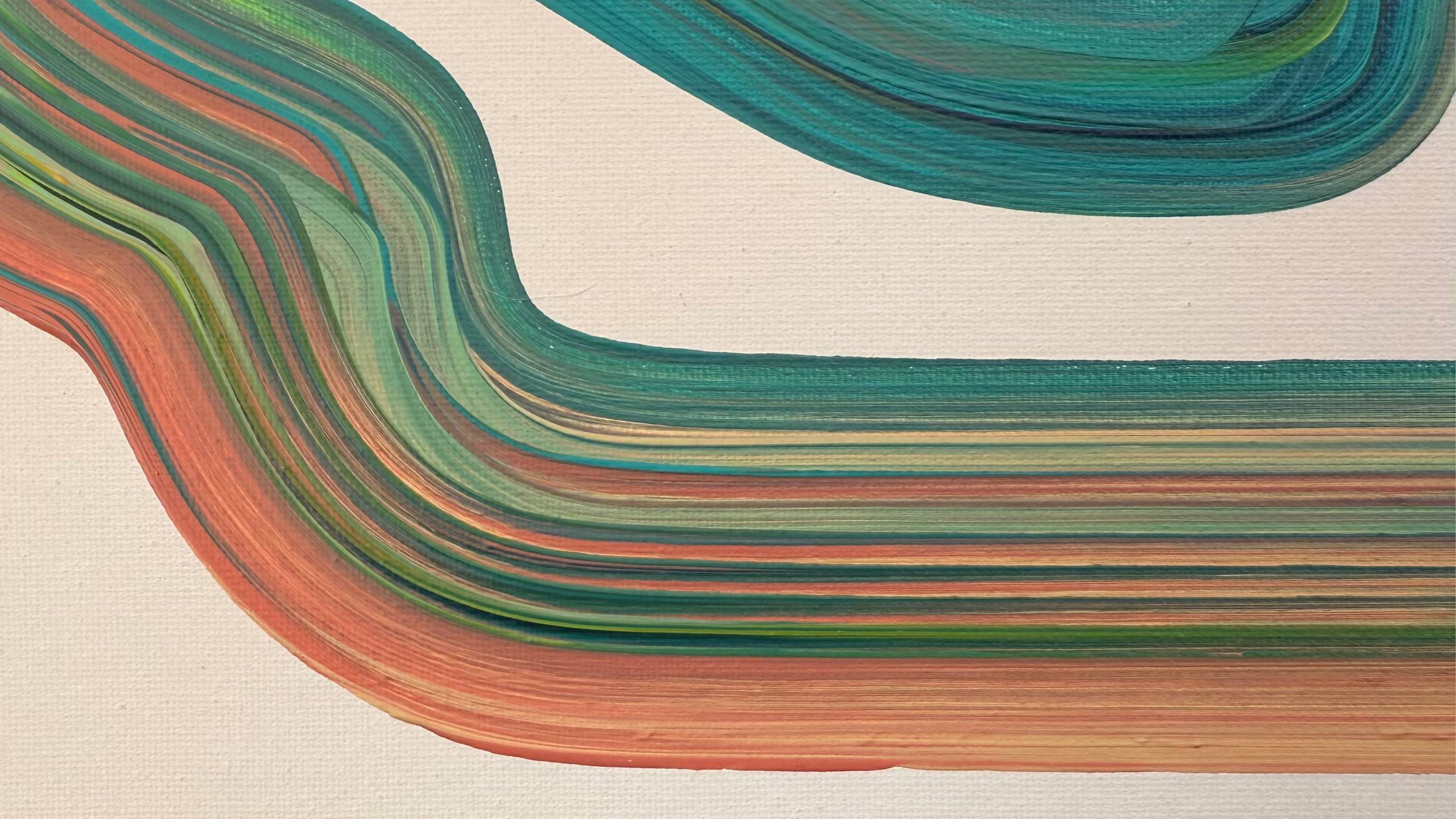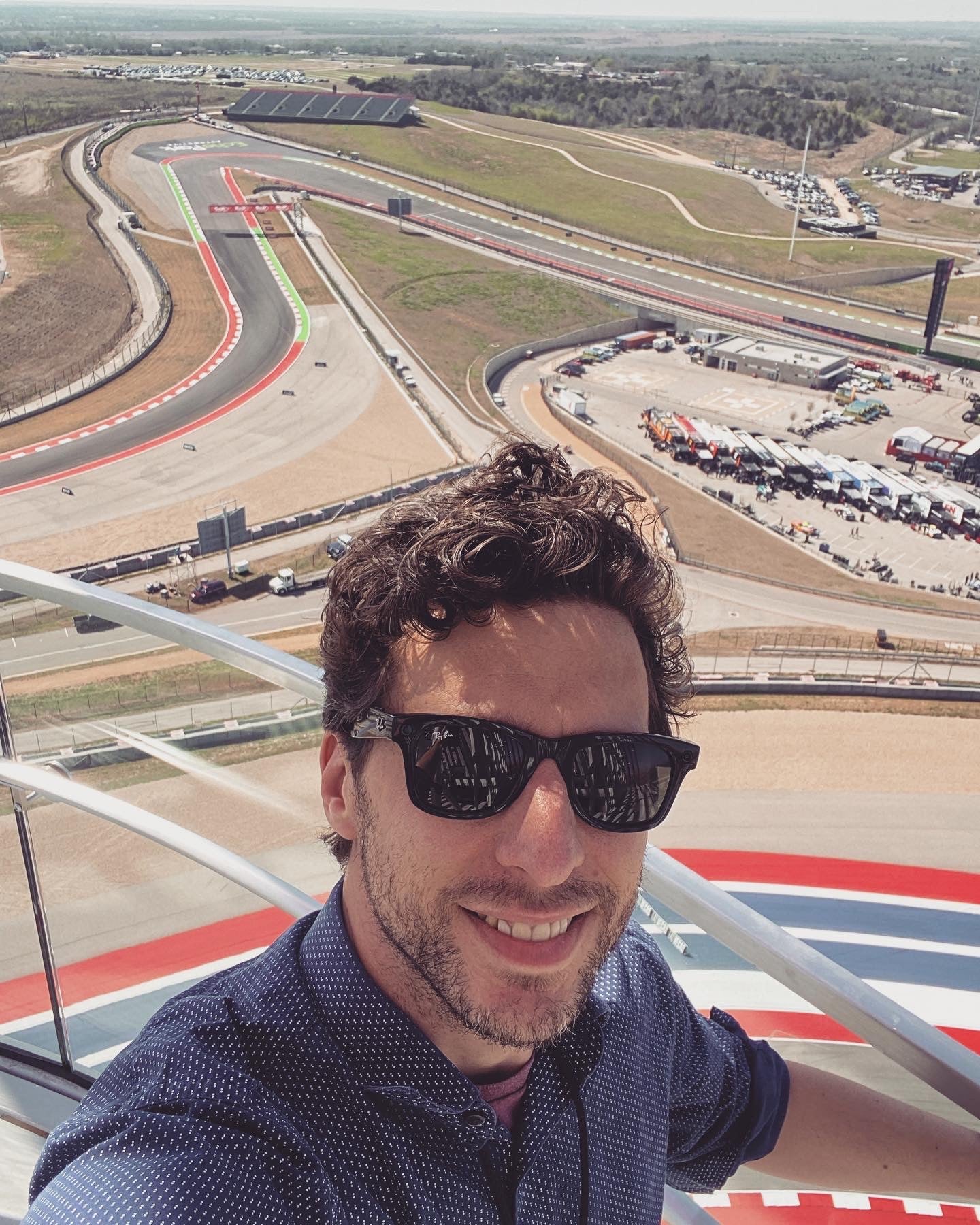
I grew up watching races at local short-tracks throughout Florida, thanks to my Uncle Steve's influence. That’s where it all started for me—my obsession with the lines, the colors, the energy of racing. Art and creativity was in my blood from a very young age. My mom saved drawings from as young as 21-months, that contained images of closed shapes and recognizable objects like trains. Every trip to the zoo, or the museum, or the race track resulted in hours of drawing what I had seen, back at home.
As a child of the 80's and 90's, technology was near the center of everything I did, so I quickly found my way to computers and racing simulators. As a teenager, I began racing at Hialeah Speedway, a gritty little short track in Miami where you learned fast or you got left behind.
Since then, I’ve spent my entire professional life in motorsports. I’ve attended hundreds of races and walked the infields of dozens of tracks across the country. I’ve designed liveries for NASCAR Cup Series cars, developed racing video games, and led digital and social strategy at Joe Gibbs Racing, one of the most iconic teams in the sport. I’ve worked with drivers, sponsors, engineers, and creatives—living and breathing racing from every angle.
This sport isn’t a theme or a passing interest for me. It’s in my hands, my eyes, my gut. Whether I’m designing a car or laying down paint in the studio, I see the track in everything. The lines. The flow. The unpredictability. Racing is art—and I’m just translating it.
Boris lives in North Carolina, USA, with his wife, daughter, and pets. Some people know him from social media, especially his drawing show "Let's Draw Race Cars with Boris."
He has also illustrated numerous books, including the Ratters of Lightning Ridge series by Richard Holmes.
Artist Statement: Track Shape Artwork
My work begins with speed. With the curves of a racetrack, the repetition of laps, and the unrelenting pursuit of precision. As a lifelong motorsports enthusiast, I see race circuits not just as places of competition—but as shapes of ritual, rhythm, and human ambition.
Inspired in part by the abstract plotting techniques of Florian Markus, I use a pen plotter and acrylic paint on canvas to explore these ideas. I start by designing a track-inspired shape in vector form, then generate outlines—10 to 15 of them—each one spaced evenly like ghost laps echoing outward. The plotter draws these paths with a felt ink marker, creating a map for the paint to follow. What happens next is a collaboration between me, the machine, and the medium.
Sometimes I apply paint as single-color dots, assigning each line a hue to carry along its entire path. Other times I lay long, colorful bands across the design, like sunbreaks cutting across a track. Once the paint is placed, I replace the marker with a dry brush and send the plotter over the canvas again. With no ink of its own, the brush drags and blends whatever paint it encounters, smearing, mixing, and revealing the unpredictable beauty of motion and contact.
Though the track is fixed, the outcome never is. Each piece contains variables—paint thickness, brush pressure, angle of curves—that make every lap unique. Just like racing. No matter how meticulously engineered the car, or how practiced the driver, no two laps are identical. The same is true here. I work within a strict path, but the results are never the same.
This tension—between human and machine, control and chaos, repetition and spontaneity—is at the heart of my practice. In the art world, using machines is often seen as impersonal or unoriginal. In sports, race car drivers are sometimes dismissed because “the car does the work.” But in both worlds, it’s the human element—the intuition, the timing, the decision-making—that gives life to the performance.
My paintings are a celebration of that paradox. Of the ways we create meaning within systems. Of how even the most controlled environment can give rise to surprise, expression, and something entirely one-of-a-kind.
That's racing.
That's art-making.
